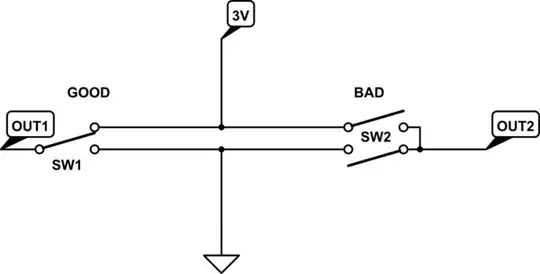I'm building a doohickey that uses 4 pairs of momentary switches. For prototyping, I'm using standard little pushbutton switches that plug into a breadboard, two for each pair. When I've finished the code and am done playing with it, I want to use 4 SPDT momentary toggle switches instead of the four pairs of pushbuttons.
Now, with my limited knowledge of electrical/electronic stuff, it seems to me that the SPDT toggle switch is no different from two SPST pushbuttons. I've learned, however, that the real world doesn't always do what you think it should (I'm a software guy where programs do exactly what you tell them to do) so I thought I should ask before I do something I'll regret.
I'm not planning on using any resistors or anything; each button just goes from GND to a GPIO pin and the code sets them up thusly:
GPIO.setmode(GPIO.BCM)
GPIO.setup(switch01, GPIO.IN, pull_up_down=GPIO.PUD_UP)
It works as-is with the pushbuttons; will I be getting myself in trouble if I switch to the SPDT toggles?
